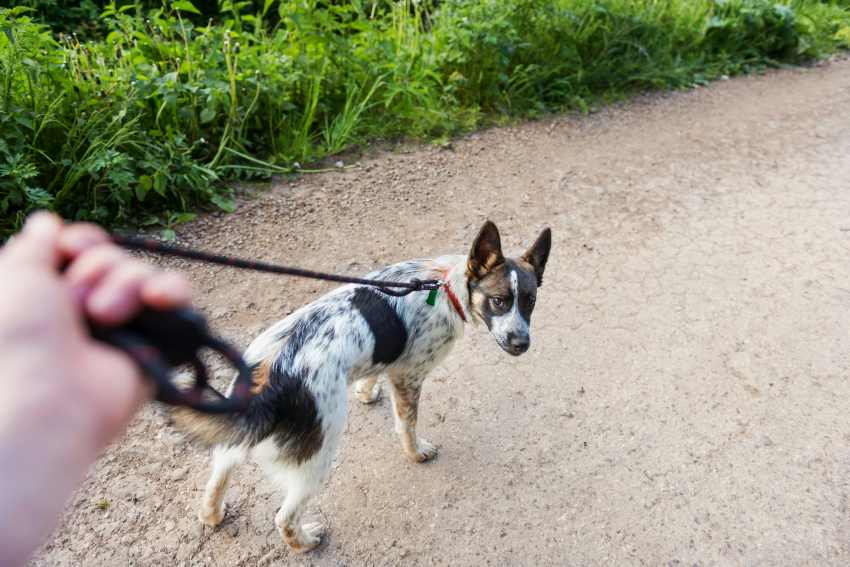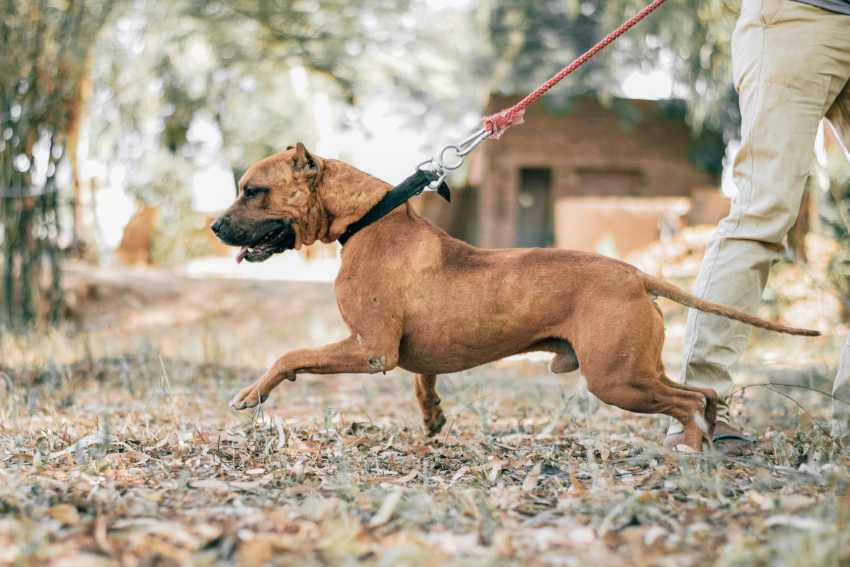Understanding the root causes of leash pulling behavior in dogs and implementing consistent training techniques can lead to safer and more enjoyable walks for both dogs and their owners.
Introduction to Leash Pulling Behavior in Dogs
Understanding why dogs pull on the leash during walks is crucial for any dog owner. It’s a common issue that can significantly impact the safety and enjoyment of daily walks for both the dog and its handler. At the heart of addressing leash pulling behavior is uncovering the root causes. Once these are understood, training outcomes can be more effective, leading to a more pleasant walking experience.
Leash pulling is not just a minor inconvenience; it’s a widespread challenge that many dog owners face. It’s essential to approach leash training with patience and the right knowledge to foster a positive walking experience. This includes understanding the common reasons behind a dog’s pulling behavior and how to address them effectively.

Reasons Dogs Pull on the Leash
One of the primary reasons dogs pull on the leash is a lack of proper leash training. Like any behavior, walking nicely on a leash requires consistent training and reinforcement of the desired behavior. Another common reason is excitement and eagerness to explore.
Dogs are naturally curious animals, and the outdoors presents a world of smells, sights, and sounds that they’re eager to investigate. This excitement can often lead them to pull ahead as they try to explore as much as possible.
Moreover, certain breeds have a stronger tendency to pull on the leash, especially those historically bred for pulling tasks, such as sled dogs. These breeds may require more focused training efforts to manage their pulling behavior.
The Dangers of Leash Pulling Behavior
Leash pulling can pose significant risks to both dogs and their owners. For dogs, excessive pulling can lead to physical injuries, such as damage to the neck, trachea, and shoulders. These injuries can result from the pressure exerted by the collar or harness against the dog’s body as they pull.
Additionally, dogs that pull excessively on the leash may experience discomfort and stress during walks, which can negatively affect their overall well-being. For owners, managing a dog that pulls on the leash can be physically demanding and lead to strained relationships due to the frustration and challenges experienced during walks.
Training Techniques and Methods to Prevent Leash Pulling
Training a dog to stop pulling on the leash effectively involves positive reinforcement. Rewarding dogs for walking calmly beside their owners can encourage the desired behavior. This could include treats, praise, or playtime whenever the dog maintains a loose leash. Consistency is crucial in leash training; using the same cues, rewards, and walking routes can help reinforce the training.
Short, focused training sessions conducted multiple times throughout the day can also be beneficial. These sessions can help reinforce desired behaviors and provide ample opportunities for practice without overwhelming the dog.
The Online Dog Trainer Leash Pulling Course
If you’re grappling with the challenge of your dog pulling on their leash, The Online Dog Trainer’s leash pulling course, led by the esteemed Doggy Dan, offers a comprehensive solution.
Currently, you can get this course for a $1 Trial for 3-Days – Please note: Prices mentioned in this blog post are accurate as of the publication date and may vary in the future.
This course is meticulously designed to address the root causes of leash pulling, employing positive reinforcement techniques that foster mutual respect and understanding between you and your furry friend.
Doggy Dan’s expertise shines through in every lesson, providing you with the tools and knowledge to transform your walks into enjoyable, stress-free experiences.
Whether you’re dealing with a stubborn puller or just starting out with a new puppy, this course promises to equip you with effective strategies to ensure a harmonious walk for both you and your dog.
Watch a short introductory video about the Online Dog Trainer Leash Pulling Course.
The Significance of Consistency and Patience in Leash Training
Consistency in training routines is essential for helping dogs understand and internalize the expected behaviors during walks. Dogs thrive on routine and clear expectations, and consistent training can significantly improve their ability to walk nicely on a leash.
Patience is equally important in leash training. Behavior modification takes time, and expecting immediate results can lead to frustration for both the dog and the owner. Inconsistent training practices can confuse dogs, making it more challenging to achieve the desired outcomes.
Tools, Equipment, and Accessories for Effective Leash Training
Several tools and pieces of equipment can aid in reducing leash pulling behavior. Front-clip harnesses, head halters, or no-pull harnesses can provide better control and discourage pulling by redirecting the dog’s movement. However, it’s important to avoid tools that can cause discomfort or harm, such as choke collars or prong collars. Clicker training, which uses a sound to mark desirable behavior followed by a reward, can also be effective in teaching loose leash walking.
When to Seek Professional Guidance for Leash Pulling Issues
If consistent training efforts do not lead to improvement in leash pulling behavior, seeking help from a certified dog trainer or behaviorist is recommended. A professional can assess the specific needs of the dog and tailor training techniques accordingly, providing a customized approach to address leash pulling issues.

Conclusion on Addressing Leash Pulling Behavior
Addressing leash pulling behavior in dogs requires a combination of understanding, patience, and consistent training efforts. By identifying the underlying reasons for leash pulling and utilizing appropriate training techniques and equipment, dog owners can significantly improve their walking experiences and strengthen their bond with their pets.
The Online Dog Trainer Leash Pulling Course
If you’re grappling with the challenge of your dog pulling on their leash, The Online Dog Trainer’s leash pulling course offers a comprehensive solution.
Currently, you can get this course for a $1 Trial for 3-Days – Please note: Prices mentioned in this blog post are accurate as of the publication date and may vary in the future.
Related Articles:
How to Manage a Dog That Pulls on the Leash
How to Teach a Dog to Heel – With or Without a Leash
Recent Posts
Summer Safety Guide for Dog Owners: Keeping Your Canine Companion Cool and Comfortable
Summer brings warmth and sunshine, inviting humans and their canine companions to enjoy the outdoors. However, the rise in temperature also increases the risks of overheating and heat-related...
The Importance of Heat Safety for Dogs: Understanding Heatstroke and How to Prevent It
Heatstroke is a serious condition that can occur in dogs when their body temperature becomes dangerously high, typically as a result of prolonged exposure to high temperatures or excessive physical...

